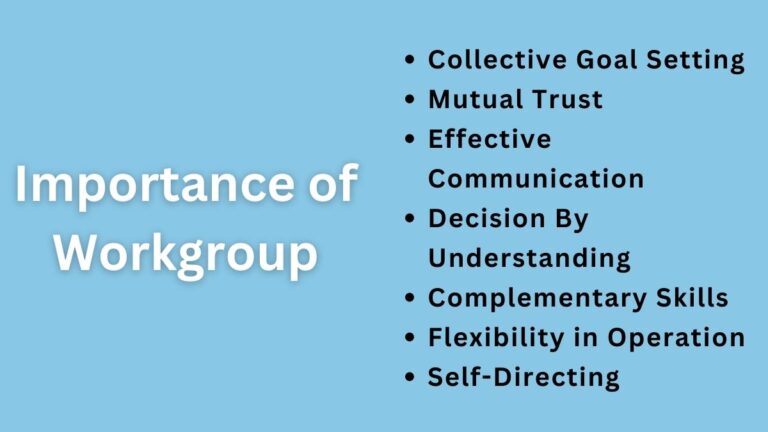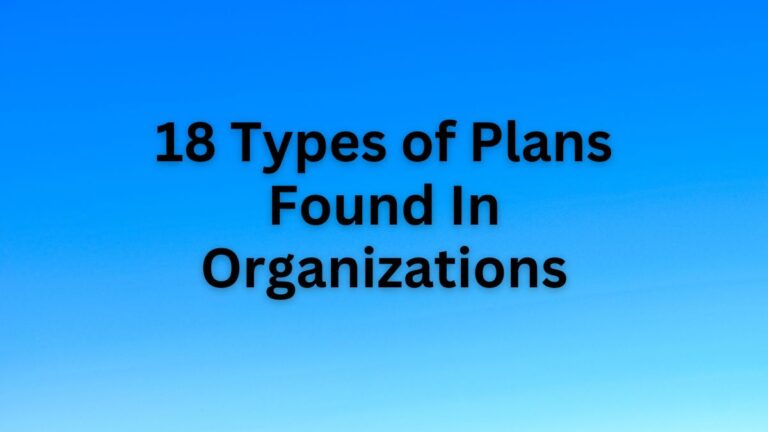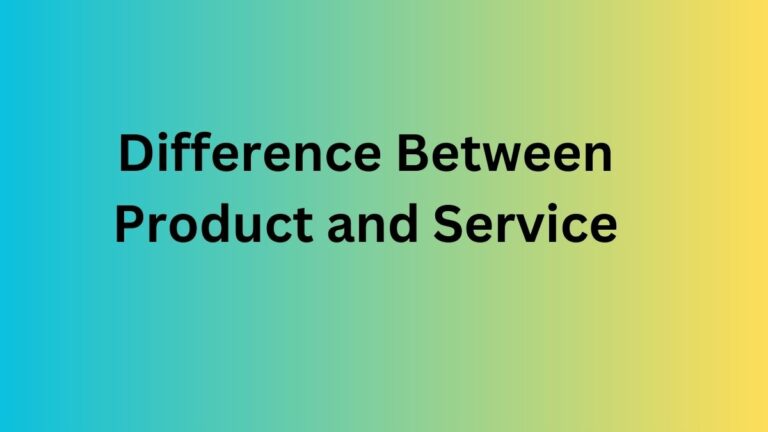What is Goal Formulation? Definition, Process, Factors, Approaches, and Problems
What is Goal Formulation?
A goal is the desired outcome of an individual or an organization. Goal formulation or goal setting is the process of specifying the desired goal. It is a complex as well as a unique process in the organization.
Goals serve as the foundation of all organizational decisions and give a unified direction to which all management efforts are directed. Goals are critical for organizational success they give the organization a reason for its existence.
The goal should be as effective as possible and have a higher success rate. Only effective goals can be achieved in the specified time frame. Management should give proper emphasis while formulating goals to make them effective.
The process of goal formulation differs from organization to organization. It mainly depends on the size and nature of the organization, the attitude of top management, the efficiency of managers, and the participative culture.
However, every organization should strive to make organizational goals as precise, measurable, feasible, rational, and time-specific as possible.
Process of Goal Formulation
Since every organization’s mission and vision are different the goal-setting process also differs. Goal formulation is a process. Its main steps include the following.
Review Mission Statement
The mission statement of an organization is the far-reaching goal. You should first review the mission statement. Objectives and goals are developed to ensure mission achievement. In your organizational goals, the mission of the organization should be included.
Scan the Environment
Environment scanning is the second process of goal setting. It includes analyzing the organization’s internal and external factors that could have any direct or indirect influence on organizational activities.
Related: What is Organizational Goal?
The internal environmental factors offer information about the strengths & weaknesses and external factors provide likely threats and opportunities. Organizational strengths help to grab the opportunities which is the basic foundation for the attainment of goals.
Thus, you should gather the basic information to study the impact of external environmental factors before formulating the goals.
Determine the Goals
Once the impact of environmental factors analysis is done the top managers determine the overall as well as departmental and individual goals. While determining the goal as stated in the first step they should follow the mission statement.
The goals should determine the key areas of business and provide a valid reason for organizational existence. And, they should be clear, measurable, and appealing to employees, and other important stakeholders.
Implement the Goal
After the determination of goals, managers should write them down and communicate to all organizational members properly to ensure effective implementation. He should clarify the power and duties each member possesses in order to effectively implement and attain.
Review the Results
Reviewing the results is necessary to ensure whether the desired goals are achieved or not. You should compare the employee’s actual performance with standard goals. If any deviation comes after reviewing it makes it easier to take remedial steps.
Read Also: What is Social Responsibility?
Factors Affective Goal Formulation Process
Goal setting is a complex task. There are a number of factors that can affect the goal formulation process. Some include:
Nature and Size of the Organization
The functional area of an organization differs from others depending on its nature. Financial institutions, business organizations, service organizations, etc., are all founded for various reasons, and as a result, they all need to carry out various tasks.
On the basis of nature, the business environment factors also differ. They must therefore set separate goals. Similarly, the capability of small, medium, and large organizations also influences the goals they set.
Level of Participation
The process of setting goals is impacted by managers’ and operating-level employees’ involvement. Although including managers and staff at every level slows down decision-making, it improves goal effectiveness.
Related: Management by Participation
The likelihood that the organization’s goals will be accepted improves with the participation of all parties involved, which motivates employees.
Organizational Culture
The level of employee involvement in decision-making, business ethics, training, development, etc., depends on the organizational culture. These factors are more significant when making goals.
For instance, if an organization cares more about its social obligations, one of its goals might be gradual profit, the creation of local employment possibilities, etc., whereas if it cares less about social responsibilities, one of its goals would be an immediate return on investment.
External Environment
External environmental factors also called PESTLEG include political, economic, sociocultural, technological, legal, environmental, and global factors that directly affect goal setting as well as goal attainment. These factors provide opportunities and threats that influence the goal-setting process.
Attitudes of Top Management
The participative method in goal setting, resource allocation, and strategic planning with other organizations is influenced by top management attitudes. While a limited and constrained attitude has a negative impact, an open and broad management approach positively influences the goal, making it a more effective goal.
Efficiency of Managers
The top management formulates, in general, the overall goals but departmental goals and operating goals are formulated by departmental managers and operating-level managers. The efficiency of these managers affects environmental scanning, identification of opportunities and threats, and estimation of strengths and weaknesses which also affect goal setting.
Approaches to Goal Formulation
Traditionally there were two approaches (top-down and bottom-up) to setting goals in the organization. But today there are three popular approaches for goal formulation with the addition of the MBO approach.
Top-Down Approach
Top-level managers establish the overall goals, departmental goals, and subordinate goals using a top-down strategy. With the assistance of experts and BODs, they may develop goals, but they are ultimately responsible for them.
Without the input of middle and operating-level managers, they set goals. The managers at lower levels are then informed of the developed goals and asked to carry them out.
This strategy makes the assumption that companies need control and direction over the middle- and lower-level managers in order to set goals. This may speed up goal formulation, but due to the possibility of inaccurate environmental scanning, it also leads to poorer effectiveness.
Bottom-Up Approach
In this approach, operational units and divisions’ goals are defined by lower-level management. Lower-level managers present departmental managers with their goals. They submit the goals for top management’s approval after making any necessary revisions.
The top managers revise the goals before they are finalized. It is presumptive that effective goal setting requires the assistance of managers at lower levels. Employee involvement motivates them to successfully accomplish company goals.
MBO Approach
The MBO technique is a recent development in goal-setting methods. This strategy states that all managers and employees should collectively create goals. The MBO approach’s primary goal is to place the correct emphasis on employee participation.
The core of this strategy is the mutual defining of objectives between each level of management. It claims that participation from managers at all levels gives workers a sense of ownership over established goals.
Problems with Goal Formulation
Goal formulation is an important but complex function. To make goals effective, decision-makers should be properly informed about the approaches, principles, strategies, and procedures of goal formulation. In real practice, managers may face several problems while setting goals. Some are mentioned below:
- Unattainable Goals – Unattainable goals decrease the morality of members. Organizations try to set challenging goals to motivate employees but such goals can also be ideal and unattainable.
- Lack of Intellectual Capacity – Goal setting also requires the intellectual capacity of people associated with it. They should be qualified in terms of mathematical tools and techniques. Also, have good knowledge of SWOT and PESTLE analysis.
- Resource Constraints – Lack of resources becomes a problem in goal formulation. It decreases the confidence level in attaining the goal.
- Environmental Uncertain – The external environment is uncertain and complex. The changes in such an environment such as technology change, high competition, uncertainty in the political-legal environment, etc. can not be easily estimated.
- Reluctant to Change – Operating and middle-level managers may not easily accept the change in responsibility and technology intended by the top management which also creates difficulty in goal setting and implementation.
Read Next: Theories of Management
Sajan Kushmi is a content writer with more than 4 years of experience. He holds BIM Degree. He write on the topics related to Management, Marketing, and Entrepreneurship.






